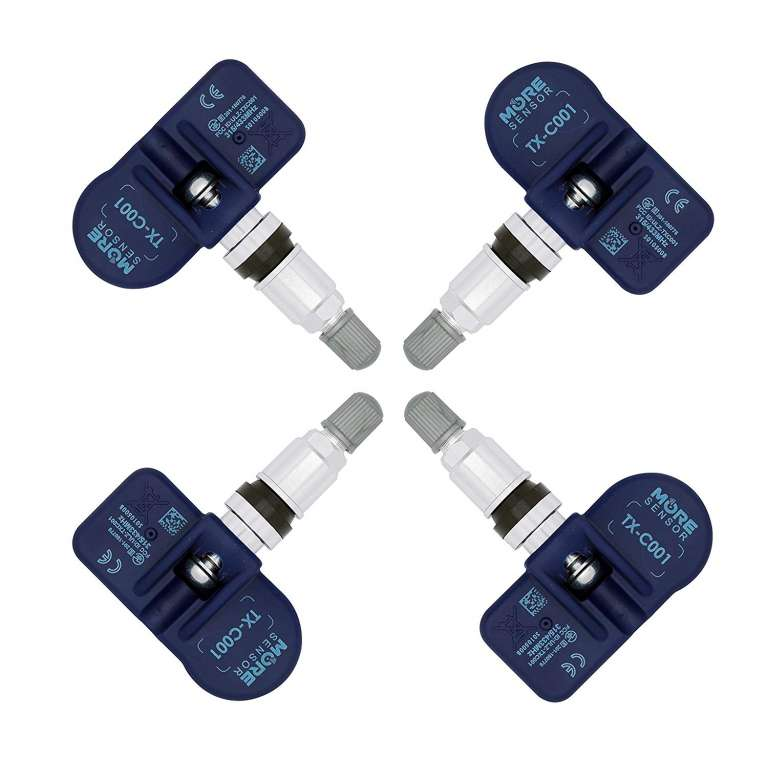Whether your car has a factory-installed direct tire pressure monitoring system (TPMS) or an aftermarket direct TPMS, you still need to ensure that you have physical tire pressure sensors installed on your wheels. So how do you know if your tires have TPMS sensors? We've done the research for your reading pleasure.
Direct TPMS sensors are mounted on the rims or wheels rather than the tires. Some styles of direct TPMS sensors are readily identifiable through the tire valve. However, checking for other styles will require you to demount your tire from the rim.
If you would like to know more about vehicle TPMS, then you have come to the right place. Read on, and we will do our best to help you understand how TPMS works and how to identify, program, and even replace some of its components.
Before you continue reading, let us say we hope you find the links here useful. If you purchase something through a link on this page, we may get a commission, so thank you!
There are two types of automotive TPMS today, namely direct and indirect. Direct TPMS monitors tire pressure directly using tire pressure sensors. Indirect TPMS, on the other hand, uses anti-lock braking system (ABS) sensors to detect tire pressure imbalance indirectly.
To make things clear, only direct TPMS use physical tire pressure sensors. You can find most of these sensors mounted on the rims or wheels of the tires. However, some newer sensors are on the tire valve caps themselves.
Moreover, under direct TPMS, there are four styles of tire pressure sensors.
Snap-in sensors use rubber valves that are very similar to traditional non-TPMS tire valves. These sensors snap into the base of the rubber valves using a key-shaped adaptor or a screw.
You can tell if you have a snap-in TPMS sensor by removing your tire valve's cap and looking at the valve stem. The valve stem should have an extended metal part between the rubber section and the base of the cap threads.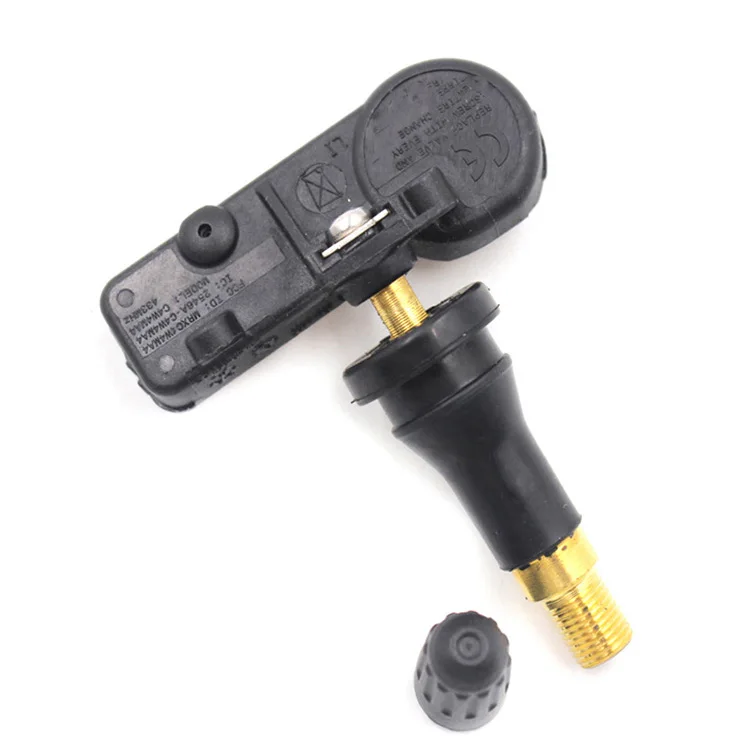 This metal part usually has a "TPMS" mark.
This metal part usually has a "TPMS" mark.
Many American vehicles use locally-produced snap-in sensors. These sensors are often easy to mount as they require little to no mounting equipment for installation.
Check out this 4-piece snap-in TPMS sensor set on Amazon.
Clamp-in or clamp-on sensors also use the tire air valves. However, unlike snap-in sensors, this second sensor style mounts on the rim's valve hole using a mounting nut. Furthermore, clamp-in sensors use grommets on the outer part of the valve stem for sealing purposes.
Most clamp-in sensors use metal valve stems. You can also identify clamp-in sensors without demounting the tires by checking for the metal grommet on the valve stems.
Clamp-in sensors may come in one-piece or two-piece designs. For two-piece designs, the tire valve represents the first piece, while the physical sensor is the second piece.
Many luxury car owners prefer the look of clamp-in sensors over snap-in sensors.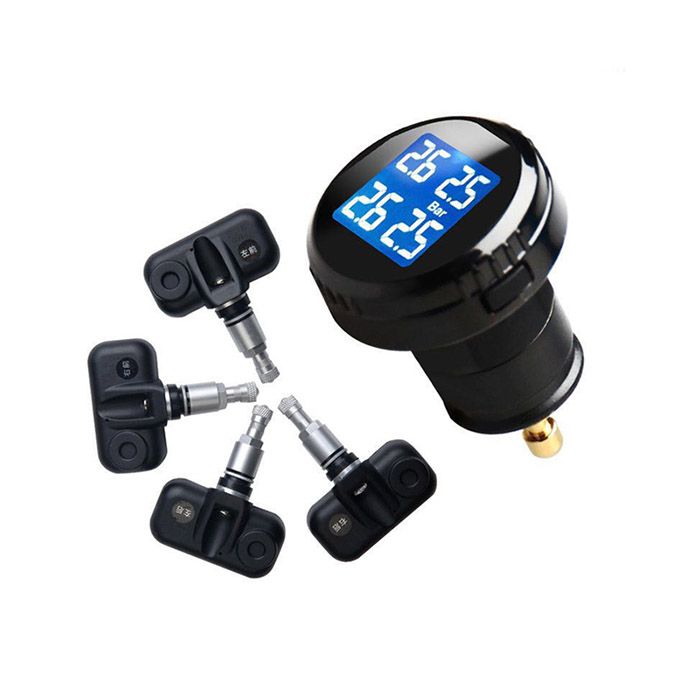 Moreover, some clamp-in sensors have adjustable mounting options that make them ideal for larger rim sizes.
Moreover, some clamp-in sensors have adjustable mounting options that make them ideal for larger rim sizes.
Check out this 4-piece set of clamp-on TPMS sensors on Amazon.
Banded TPMS sensors do not make use of the tire valves for mounting. Instead, these sensors monitor the tire pressure while attached to a "cradle" mounted on the drop center of the inner surface of the rim.
Banded sensors are meant to be mounted 180 degrees away from the tire valve. Because of this location, banded sensors do not interfere with tire mounting and demounting. Some models from Ford, Corvette, Lincoln, and Mercury use banded TPMS sensors.
Check out this banded tire pressure sensor on Amazon.
External or cap-based sensors screw on top of your valve stem in place of traditional tire valve caps. These sensors measure the air pressure using the valve openings.
Out of all sensor styles, external sensors are the easiest to install.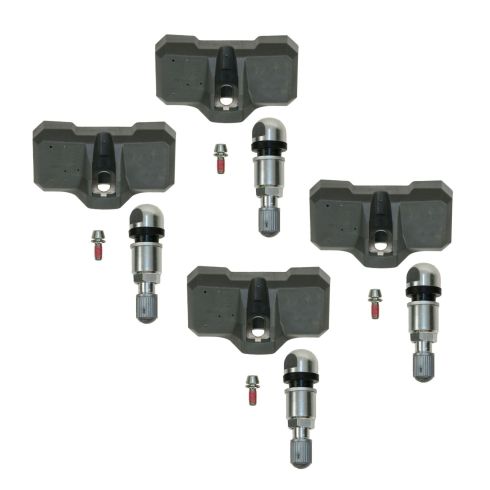 However, external sensors also have plenty of disadvantages. Aside from being constantly exposed to the elements, these sensors are also prone to theft. Furthermore, external sensors are not as accurate as internal ones.
However, external sensors also have plenty of disadvantages. Aside from being constantly exposed to the elements, these sensors are also prone to theft. Furthermore, external sensors are not as accurate as internal ones.
Below is a helpful video for three of the four TPMS styles we discussed.
In the U.S., the TREAD Act of 2000 requires all cars and light-duty vehicles to have TPMS if they:
However, dualies or vehicles with dual wheels on a single side of an axle are exempted from this requirement.
It has been a decade and a half since the TREAD Act's compliance date. Therefore, we can expect that majority of passenger cars on the road today have TPMS.
Nevertheless, without inspecting the tire valves or demounting the tires from the rim, drivers can easily know if their cars have TPMS.
First, drivers can check their good old car owner's manual. If their specific model has TPMS, the corresponding manual should have a section detailing the feature's functions.
Second, drivers can check their instrument cluster during vehicle start-up. You can turn the ignition to the "Aux" or "On" position, or you can start the car. If the car has TPMS, then an appropriate indicator should light up on the instrument panel during the car's start-up.
Finally, you can use a TPMS programming and diagnostic tool to check the presence of sensors.
This tool can detect the signals sent by the tire pressure sensors to the car's computer or TPMS receiver. If the test fails, there is either no physical sensor on a tire or the sensor is malfunctioning.
Check out this TPMS Tool on Amazon.
TPMS is an electronic, sensor-driven automotive system that monitors the vehicle's tire pressure. TPMS alerts drivers when any of the tires become under-inflated.
The National Highway Traffic Safety Administration (NHTSA) requires these systems to alert drivers when a tire's air pressure falls below 25% of the recommended inflation level. This alert comes from an indicator or warning light on the driver's instrument panel.
There are two TPMS types: direct and indirect.
As we have discussed, direct TPMS uses physical sensors to measure the air pressure inside the vehicle's tires. The sensors relay this information via radio frequency to a receiver. In factory-installed systems, this is usually the car's computer or electronic controlling unit (ECU).
The ECU, in turn, controls the activation of the TPMS display on the driver's instrument panel. In some aftermarket TPMS products, the receiver unit is also the display unit.
Some aftermarket products may be more informative than many vehicles' stock systems, as the former can give real-time tire pressure. With this information, the driver will know about any under-inflation way before the NHTSA-required threshold of 25%.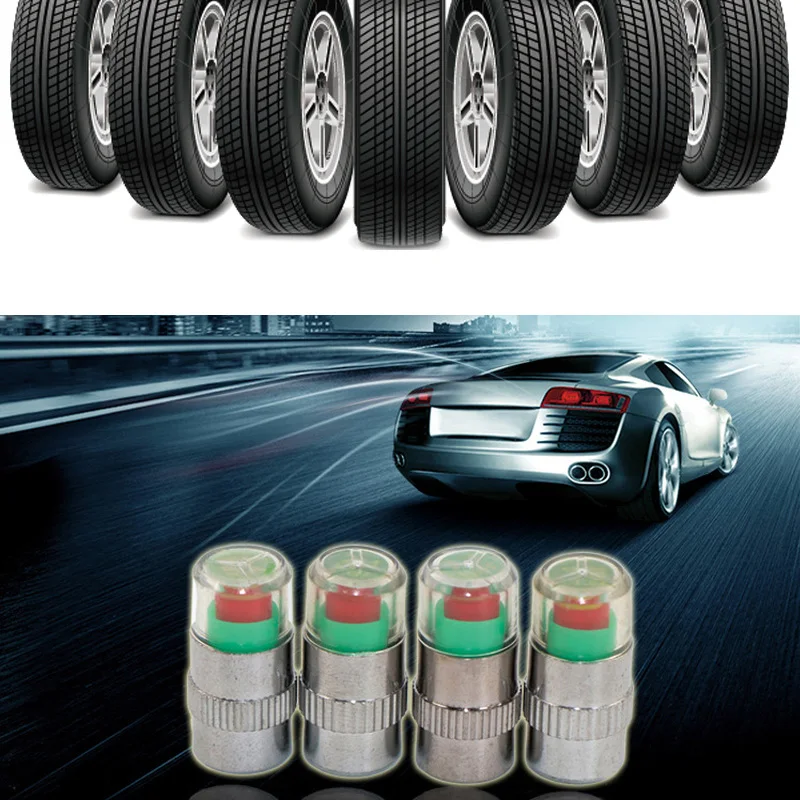
Check out this best-selling aftermarket external TPMS kit on Amazon.
Indirect TPMS uses a car's existing ABS sensors to estimate the air pressure in the vehicle's tires. Like the direct systems, indirect TPMS also alerts drivers when a tire becomes under-inflated by 25%.
How do ABS sensors measure air pressure, you may ask.
ABS sensors measure wheel speed as part of their function for the car's ABS system. These sensors are programmed to measure this speed when the tires are inflated to their recommended pressure.
If ABS sensors detect a different speed for one of the wheels, it assumes that the tire on that wheel has insufficient air pressure.
Because indirect TPMS rides on ABS sensors to function, it does not need physical tire sensors. Hence, car owners need not buy new tire pressure sensors every once in a while.
However, indirect TPMS has its disadvantages.
Indirect TPMS are less accurate than direct TPMS.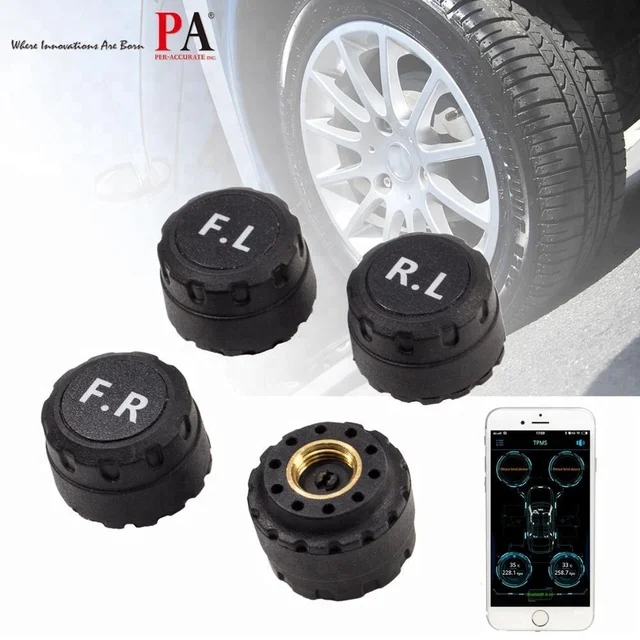 Indirect systems also need reprogramming every time you rotate your tires or change your tires' pressure. You may want to change your tire pressure to increase or decrease grip, depending on the season or the terrain conditions.
Indirect systems also need reprogramming every time you rotate your tires or change your tires' pressure. You may want to change your tire pressure to increase or decrease grip, depending on the season or the terrain conditions.
Furthermore, indirect TPMS also needs reprogramming when you do not change all of your tires at the same time. Newer tires will have larger diameters, while older used tires will have smaller diameters. The older and smaller tires will have to spin faster to travel the same distance.
Finally, the indirect TPMS alert may not activate if all four tires are under-inflated.
If your direct TPMS sensors are still in good condition, then there's no need to replace them with every change of tires. Of course, you have to ensure not to damage the sensors during the tire mounting and demounting processes.
Older TPMS sensors typically last between five and six years.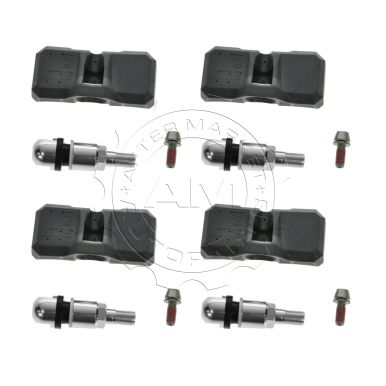 However, newer sensors may have longer service lives of five to ten years. This lifespan depends highly on the sensors' battery life.
However, newer sensors may have longer service lives of five to ten years. This lifespan depends highly on the sensors' battery life.
Most modern TPMS sensors have built-in, non-replaceable lithium-ion batteries. If the batteries die out, you need to replace your sensors.
TPMS sensors send out tire pressure information more often when the vehicle is in motion. If the car is idle or sitting in the garage most of the time, the sensors will not drain their batteries as much.
If one of your TPMS sensors sustains physical damage, then you may replace it without replacing all the others. However, if one of your sensors starts malfunctioning after years of use, then you probably need to replace your entire set of sensors.
Thank you very much for reading. We hope we were able to help you understand more about tire pressure monitoring systems.
For more interesting reads about tires and other automotive topics, please check out these great articles.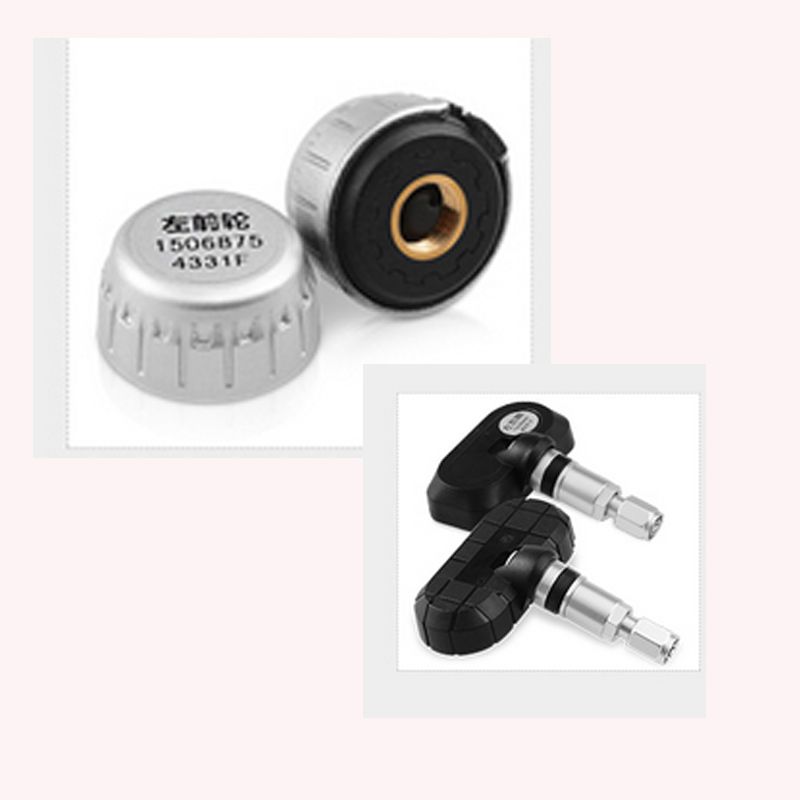
Why Do New Car Tires Wear Out So Fast?
What Are The Biggest Tires For A Stock Tacoma?
Can You Put Chains On A Subaru Forester?
You may have heard about a vehicle feature called TPMS, which stands for tire pressure monitoring system, but you may not yet be aware of the many benefits of this feature, or how you can determine whether your vehicle is equipped. This system is designed to make driving safer and also more economic. If you’d like to learn more about TPMS, here are some of the basics.
What is TPMS?
The TPMS is an electronic monitoring system that keeps track of your vehicle’s tire pressure. Cars and trucks that are equipped with TPMS have an indicator on the dashboard instrument panel that illuminates to let the driver know that one or more tires are significantly under-inflated. Tires that are not properly inflated can cause a number of hazards, including in an increased chance of blowout. The low tire pressure indicator is a yellow symbol that resembles a horseshoe with an exclamation point.
Tires that are not properly inflated can cause a number of hazards, including in an increased chance of blowout. The low tire pressure indicator is a yellow symbol that resembles a horseshoe with an exclamation point.
What are the benefits of TPMS?
Prior to the rollout of tire pressure monitoring systems, drivers often failed to realize that their tire pressure was low which led to increasingly dangerous conditions while driving. Improper tire pressure resulted in a great number of accidents – most of which could have easily been avoided had the driver been aware of when to check tire pressure and adjust the inflation level accordingly.
In response to this growing risk, the US government drafted and passed what’s known as the Transportation Recall Enhancement, Accountability, and Documentation (TREAD) Act. One of the most significant outcomes of this legislation is that the majority of vehicles sold in the US since the year 2007 now include a TPMS of some kind.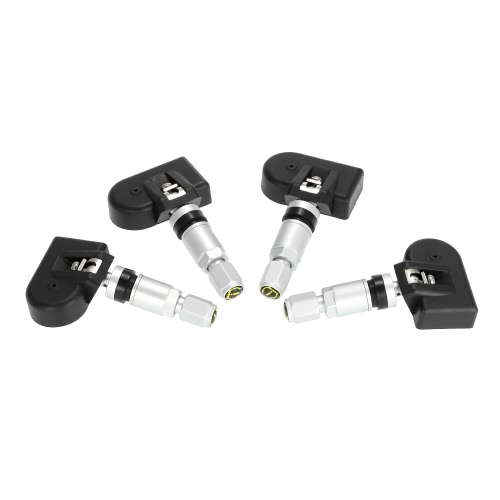
How do I know if my vehicle has a TPMS?
There are a number of different methods for determining whether a particular vehicle is equipped with a system for monitoring the air pressure in tires. The quickest and easiest way is to check your vehicle’s owner’s manual, which will include information on the feature and how it works. If you do not have the owner’s manual or it’s not easily accessible, you can check the vehicle itself for a TPMS. With many vehicles, the entire dashboard lights up upon startup. Check for the symbol there.
You may also bring your vehicle to either a mechanic or a tire professional who can not only determine whether it’s equipped with TPMS, but also test the sensors to verify that they are working properly. It’s important to note that a TPMS cannot be bypassed or disabled, so if your system is not working properly, it will need to be reprogrammed accordingly.
For more information on proper air pressure in tires or any other tire-related topic, please visit our blog or contact us today.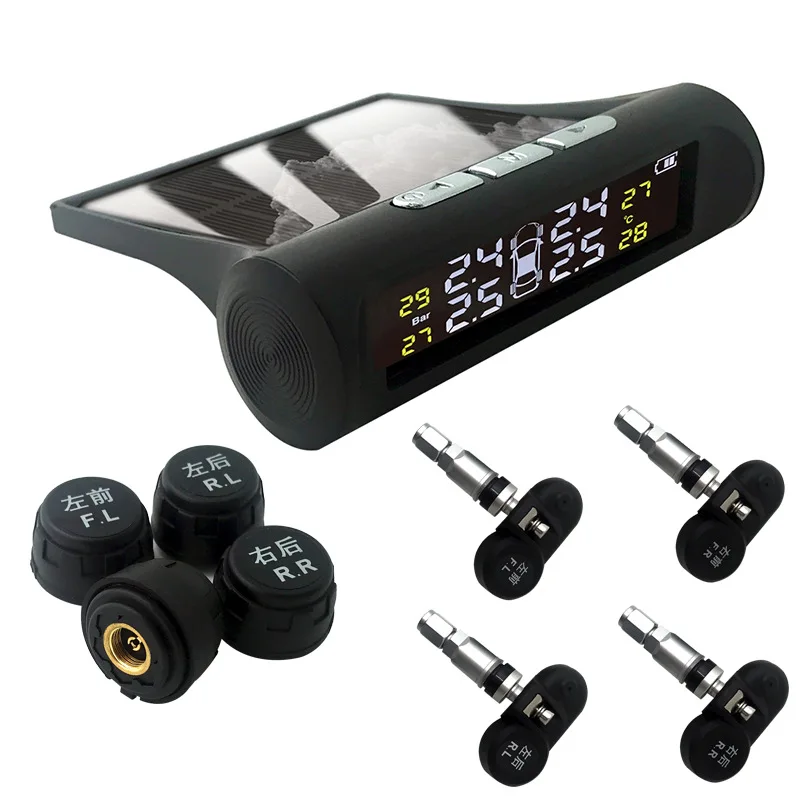
Share this post
Continuous monitoring of tire pressure proved to be excellent in military, and then in sports all-terrain vehicles. In this way, the cross-country ability was improved, quickly lowering and pumping up the wheels, and also protected the cars from punctures and tire shooting.
Contents of the article:
but Stable Stabil pressure is also important for civilian vehicles, providing safety and economy. As a result, various variants of TMPS were developed, which, after the translation of the English abbreviation, means a tire pressure monitoring system.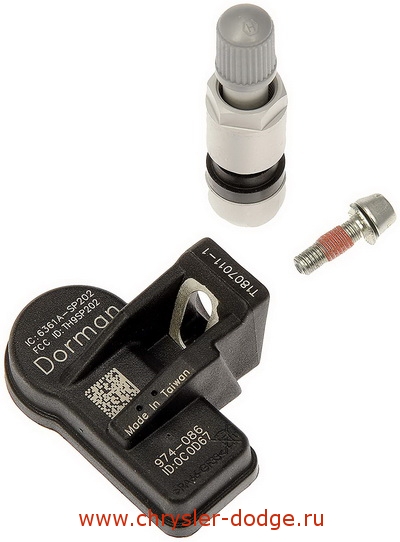
Anything is possible while driving. Slow punctures, when the wheel loses pressure gradually, fast, but silent depressurization of the rear wheel, which a novice driver may not notice, and simply a deviation from the norm.
In the latter case, nothing terrible happens, but fuel consumption increases, and tire life decreases.
It is unrealistic to force all drivers to follow the main tire parameter. It is much more reliable to provide them with an indicator with the output of readings on the dashboard and an alarm about deviations from the nominal value.
But the task is technically difficult, and we had to wait a long time until the technology was able to allow us to develop and master in a large series relatively inexpensive devices for wide application.
There are several monitoring systems that differ in terms of measuring principles.
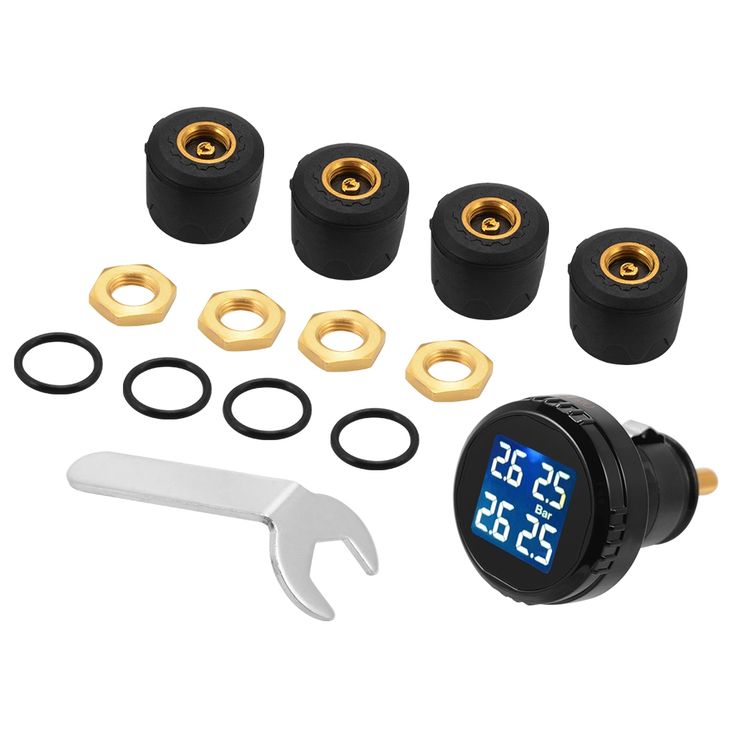 It is measured through the signal of the anti-lock braking system (ABS) of the brakes. If three wheels rotate in the same way, and the fourth one is faster, then it has a reduced rolling radius due to a change in shape during a puncture. According to the deviation from the norm, it is even possible to calculate the absolute value of pressure with a certain error, although it is unreliable and conditional.
It is measured through the signal of the anti-lock braking system (ABS) of the brakes. If three wheels rotate in the same way, and the fourth one is faster, then it has a reduced rolling radius due to a change in shape during a puncture. According to the deviation from the norm, it is even possible to calculate the absolute value of pressure with a certain error, although it is unreliable and conditional. The last option is the most common, sensors are installed on the wheels of expensive cars, as well as tuning in the budget segment.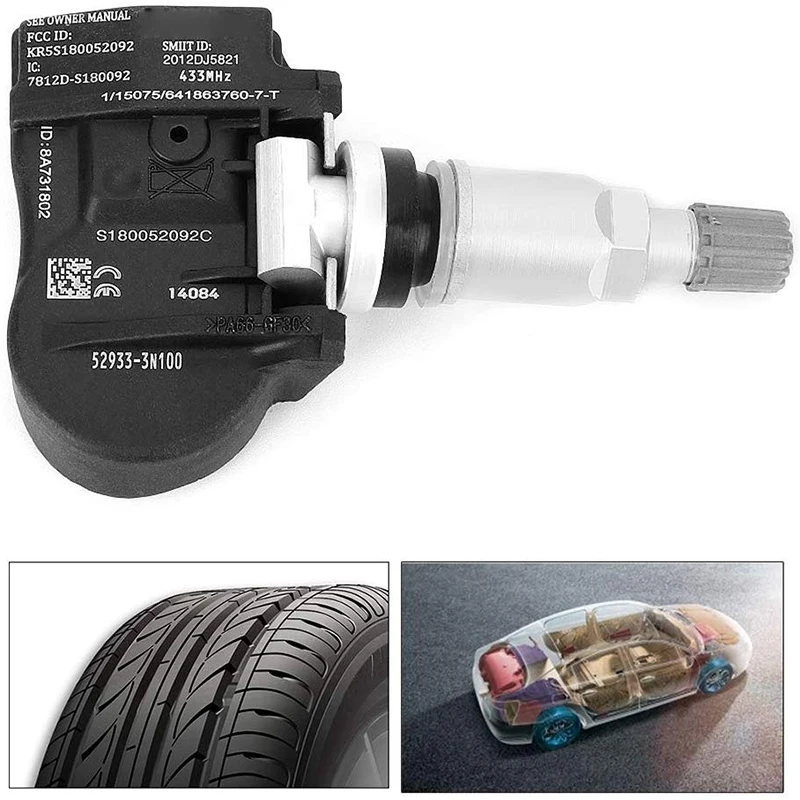
Each transmits telemetry information via radio signal to a common unit. There it is decrypted, the device number and the pressure value are highlighted. The computer knows where which source is located, since when they were initialized, they were registered in the general structure of the car's controllers.
It remains to display information, light and sound warnings on the driver's dashboard or a separate monitor that deals specifically with pressure control.
The battery is part of the wheel sensor. Usually these are reliable and small-sized sources designed for 5 years or more. But if after this period the device began to fail and fail, it may be time to change the battery.
The operating conditions of the sensor in the wheel are such that it is difficult for it to survive until the power source is discharged. Overload shock and from fast rotation, vibration, temperature changes, water and dirt - all this will not quickly kill only the most reliable device from a serious manufacturer. Market analogues do not live for more than a year.
The fault signal can be different. Sometimes internal diagnostics is used with the ignition of a control lamp. In other cases, it is easy to notice the discrepancy between the monitor readings and the actual tire pressure. Details can be reported by a scanner connected via the diagnostic connector.
Kits of varying complexity are available for self-installation. They usually consist of sensors, a signal receiver and a monitor for visual reading. The preferred one is where the sensors are mounted inside the tire at the base of the wheel valve.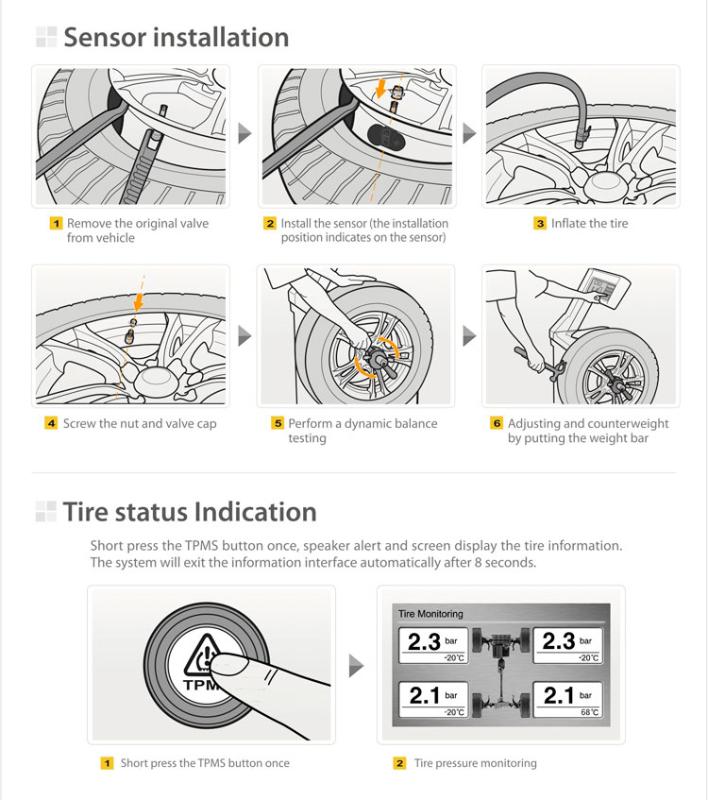 Valves are included. These sensors are much harder to steal in a parking lot.
Valves are included. These sensors are much harder to steal in a parking lot.
After installing the system according to the instructions, the sensors are registered in order to know which signal corresponds to which wheel. In the future, care must be taken when mounting tires, the sensors are easily damaged by the tools of the stand.
Setting up the system after mounting the sensors is reduced to their registration. For this, dealer or universal OBD scanners have a corresponding opportunity.
In the section of the program dedicated to the pressure control system, it is necessary to enter in a certain order the IDs of all four sensors that are directly on them.
Completely the system accepts the sensors after the test drive, it should take some time. After that, it remains only according to the readings of the scanner to verify the information from the sensors with the real pressure in the wheels, making sure that it works normally.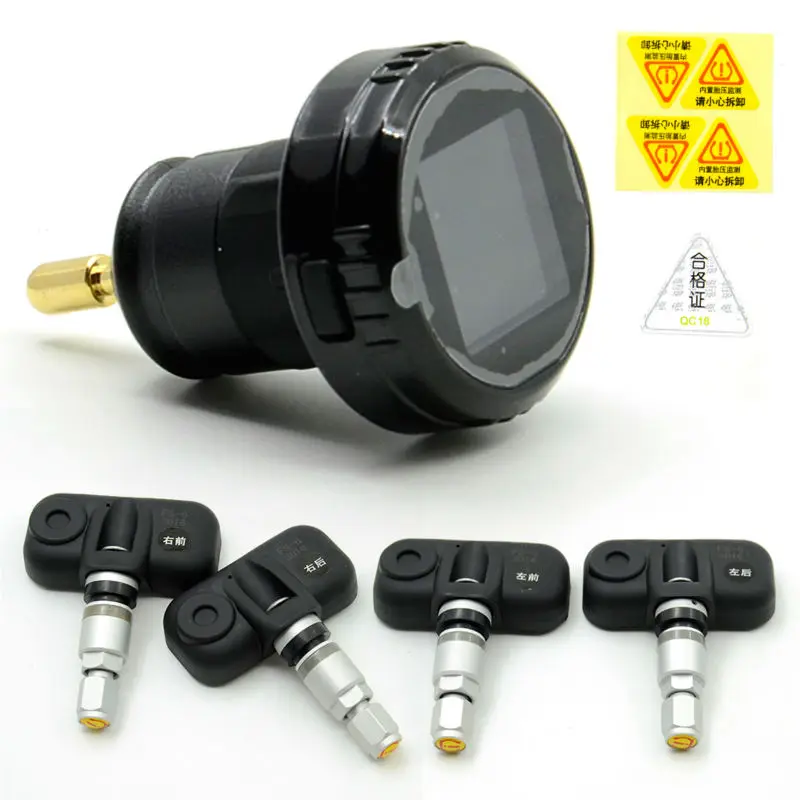
If not the whole system failed, but only indications from individual wheels are missing, then most likely the fault of the sensors.
There must be no external signs of impacts and other mechanical damage that affects devices placed both on the valve cap and under it. The valve itself is also part of the sensor, acting as a radiating antenna, so it must have a well-defined shape and spatial orientation relative to the disk.
The ability to measure the voltage of the built-in battery, as well as the likelihood of replacing it, depend on the design of the sensor. Non-separable change completely.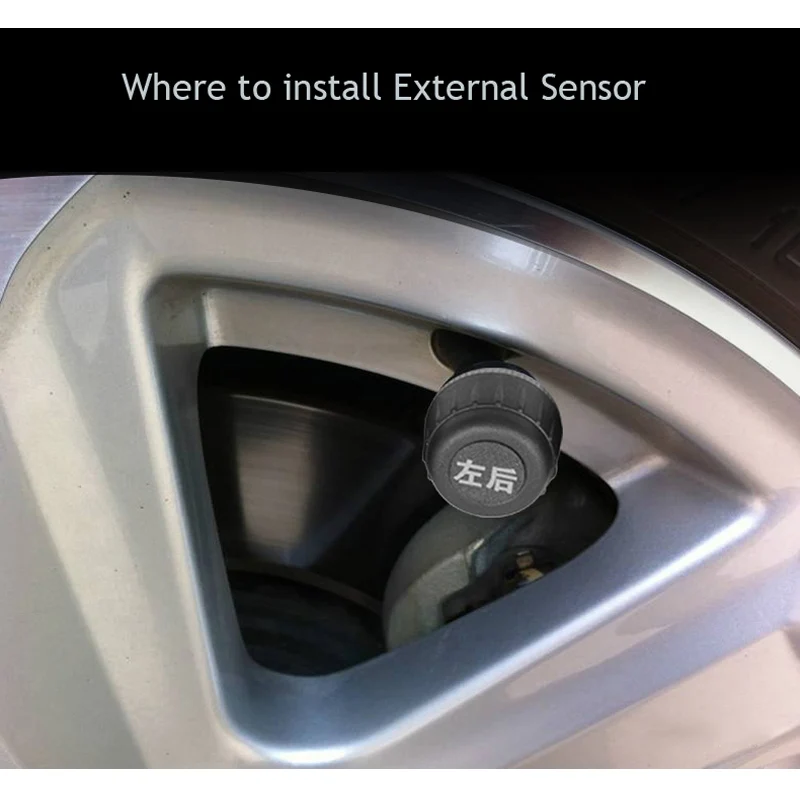 In collapsible, the battery must hold at least 3 volts under load. If the reading of the connected multimeter in voltmeter mode is lower, the battery is replaced.
In collapsible, the battery must hold at least 3 volts under load. If the reading of the connected multimeter in voltmeter mode is lower, the battery is replaced.
Sensor readings are read by OBD scanners via the diagnostic connector. Whether to enter the menu section dedicated to TPMS. It provides all the information that enters the control unit, these are pressure, temperature and sensor IDs. After that, it is easy to calculate the faulty one, make a replacement and registration.
Tire pressure monitoring system (TPMS) is a special system that is installed on vehicles to alert drivers to low pressure in one or more tires. When the pressure drops, an orange signal lights up on the control panel to warn the driver.
What is TPMS? | |
1. What isTPMS? A system that warns the driver when the pressure in one or more tires is low. 3. When is an inspection necessary?When tires are changed seasonally (if the tires are bent) or when the TPMS warning icon lights up on the control panel. | 2. Does my car have TPMS?TPMS is fitted to vehicles manufactured after November 1, 2014 or to vehicles with manual TPMS. 4. Where can I get a TPMS test done?In the services of official car dealers and RRC centers. |
Due to the increase in the number of accidents, since 2008 these sensors have become mandatory for all vehicles manufactured and sold in the USA. Since November 1, 2014, this requirement has also become mandatory for vehicles manufactured in Europe. Therefore, when buying a car that was manufactured after 11/01/2014, it will be equipped with TPMS.
Research has shown that 40% of car owners in Europe and the US check their tire pressure only once a year. Please note that different vehicles require different tire pressures depending on tire size and number of passengers. Its values can be found in the car's service book, and sometimes this information is available in the form of a sticker on the fuel tank cap or on the car body in the doorway on the driver's side.
Its values can be found in the car's service book, and sometimes this information is available in the form of a sticker on the fuel tank cap or on the car body in the doorway on the driver's side.
Incorrect pressure not only affects road safety, but also fuel consumption, driving quality and tire wear. Experts say that every day a large number of drivers drive with reduced pressure, putting at risk not only themselves, but also other road users. Therefore, TPMS is an important safety improvement.
Types of TPMS
There are two types of TPMS, direct and indirect. Indirect TPMS is based on ABS wheel speed sensors. They measure the speed of rotation of each wheel. Based on these data, the "on-board computer" is able to determine the diameter of the wheel and warn the driver when it decreases. At its core, the indirect system does not measure tire pressure, but determines the rotation speed and notifies the computer. The advantages of this system are: there is no need for special maintenance and no need to install an additional set of sensors for winter or summer tires.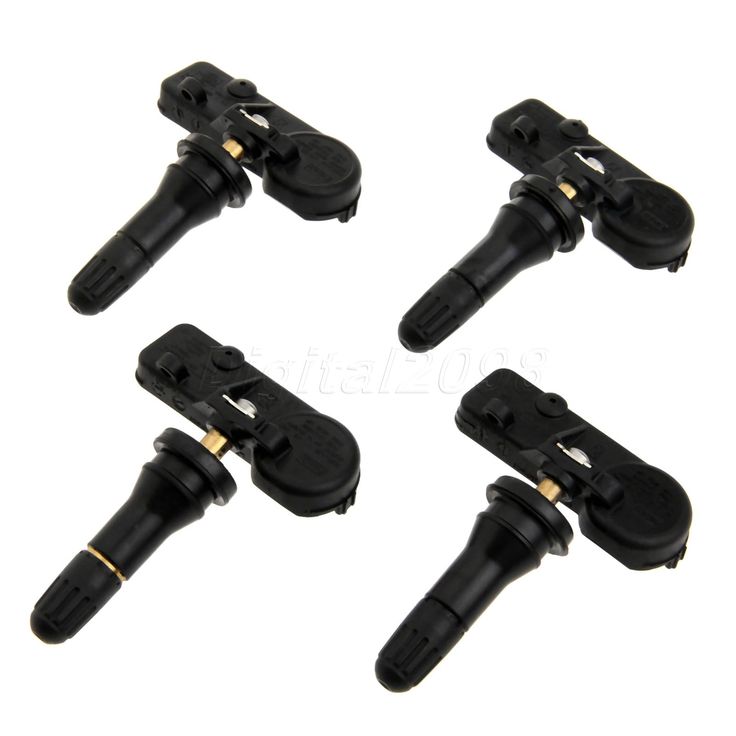 Disadvantage: the system is only able to inform the driver if the pressure drops by more than 30%.
Disadvantage: the system is only able to inform the driver if the pressure drops by more than 30%.
Direct TPMS system uses sensors that are mounted in the tires and monitor tire pressure. Some sensors are even capable of measuring temperature. The received data is sent to the central control module in the car, which processes them and, if the pressure drops below the set value, it notifies the driver with a light signal. Each such sensor has a unique serial number so that the system cannot erroneously interpret data from another vehicle and from tires to each other. Keep in mind that many automakers install sensors from other companies, so an experienced and knowledgeable technician will be required to service or replace them.
TPMS service and installation
If your vehicle was manufactured after November 1, 2014, you must be aware that it has a TPMS system and sensors will need to be calibrated each time you change tires or adjust tire pressures.